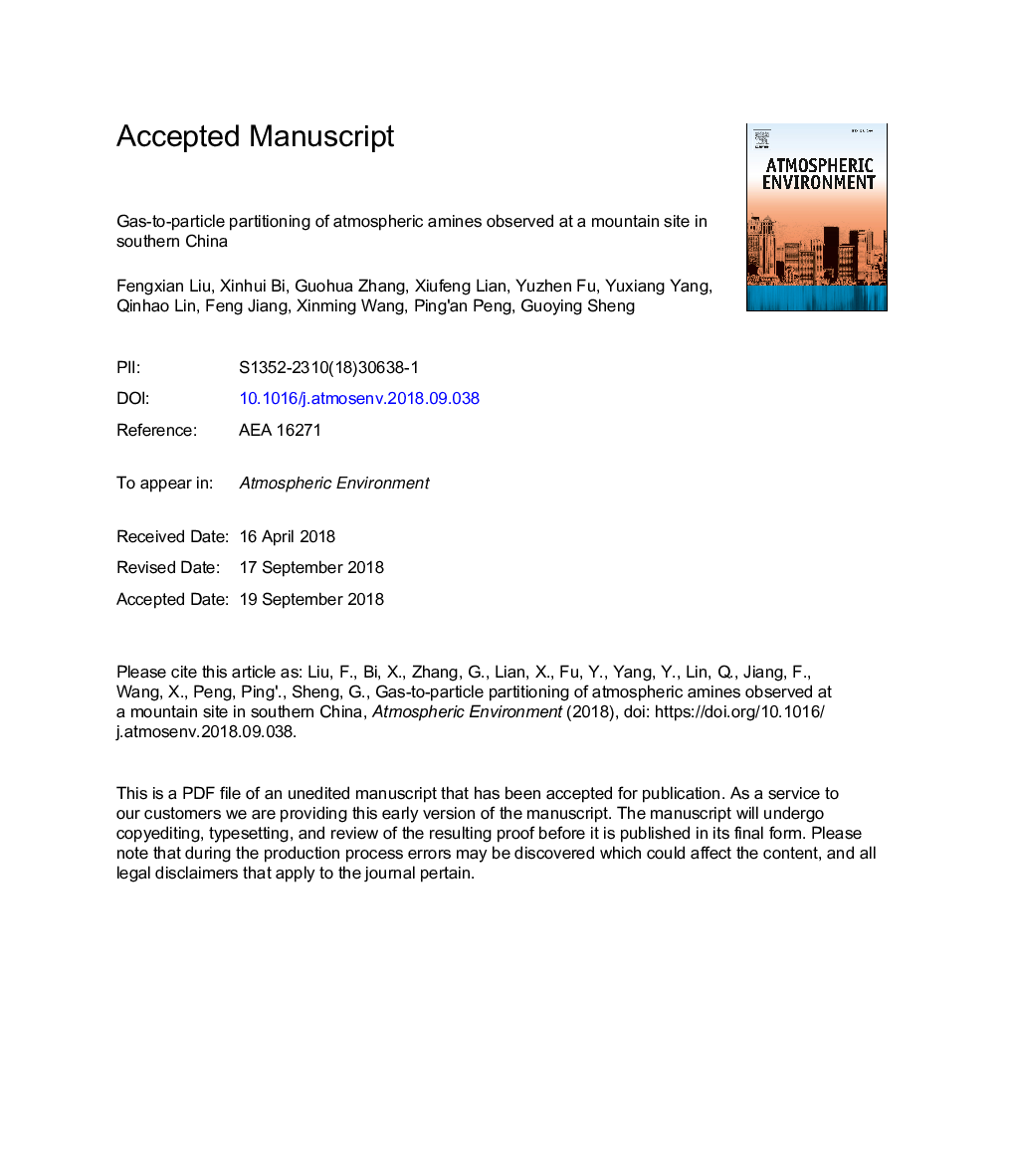| Article ID | Journal | Published Year | Pages | File Type |
|---|---|---|---|---|
| 11017745 | Atmospheric Environment | 2018 | 37 Pages |
Abstract
Amines play an important role in the formation and transformation of atmospheric aerosols. Gaseous phase and PM2.5 samples were collected simultaneously at Nanling Mountains, southern China during autumn 2016 and summer 2017. The site is strongly affected by long distance transport from marine and continental air masses. Five amines, methylamine (MA), dimethylamine (DMA), diethylamine (DEA), dibutylamine (DBA) and morpholine (MOR), were detected by gas chromatography-mass spectrometry (GC-MS) after derivatization. The backward trajectory analyses suggested that different origins of air masses led to seasonal variation of amines. In gaseous phase samples, the average concentrations of total measured amines (Æ©amines) were 193.4â¯Â±â¯111.7â¯ngâ¯mâ3 in autumn 2016 and 307.5â¯Â±â¯196.7â¯ngâ¯mâ3 in summer 2017. In PM2.5 samples, the average concentrations of Æ©amines were 12.4â¯Â±â¯10.8â¯ngâ¯mâ3 in autumn 2016 and 20.7â¯Â±â¯11.0â¯ngâ¯mâ3 in summer 2017. MA and DMA were the dominant amines, together contributing approximately 70% to gaseous amines and 80% to particulate amines. A strong linear relationship was found between Æ©amines and NO3â in PM2.5, implying that amines might mainly exist in the form of aminium nitrate. Ammonium (NH4+) was found mostly likely in the form of ammonia sulfate. Approximately 7.4% of the gaseous total amines partitioned to PM2.5. A good linear relationship between the fraction of total atmospheric concentration sorbed by PM2.5 (Φ) and the concentrations of O3 was found, suggesting that O3 likely played an important factor in the gas-to-particle partitioning of amines. Additionally, under high relative humidity circumstances (92%â¯Â±â¯7.0%), direct dissolution was a crucial step for gaseous amines partitioning into particles. The ratios of amines-C to water-soluble organic carbon (WSOC) and amines-N to water-soluble organic nitrogen (WSON) were 0.21% and 1.57% in autumn 2016 and 0.54% and 2.08% in summer 2017, respectively. The results of this study provide essential information on the formation mechanism of particulate amines.
Related Topics
Physical Sciences and Engineering
Earth and Planetary Sciences
Atmospheric Science
Authors
Fengxian Liu, Xinhui Bi, Guohua Zhang, Xiufeng Lian, Yuzhen Fu, Yuxiang Yang, Qinhao Lin, Feng Jiang, Xinming Wang, Ping'an Peng, Guoying Sheng,
